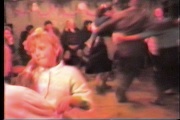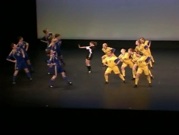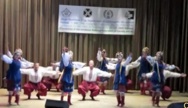


“Folk dance” and “ethnic dance” are terms that have multiple and loaded meanings, often engaging deeply held assumptions. Neither popular usage nor scholarly literature on these terms has established consensus.
In this article, I propose that “folk dance” is most useful today when speaking of the dance of peasants, as well as dances performed by other people but which are explicitly inspired by peasant dancing. By contrast, I propose that the term “ethnic dance” be reserved for those dances in which cultural boundaries are actively engaged.
In the article, we look at three Ukrainian dances that each have different relations with the categories we are exploring. A hutsulka in the village of Molodiatyne, western Ukraine is proposed as a “folk” dance that is not “ethnic” in its original context. A hopak performed during a multicultural festival in Canada is proposed as an example of a dance that is both “folk” and “ethnic.” A choreography presenting an urban soccer match is proposed as an “ethnic” dance that is not “folk.”




